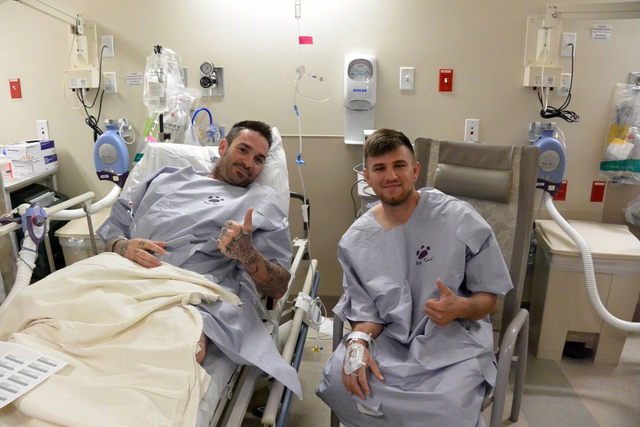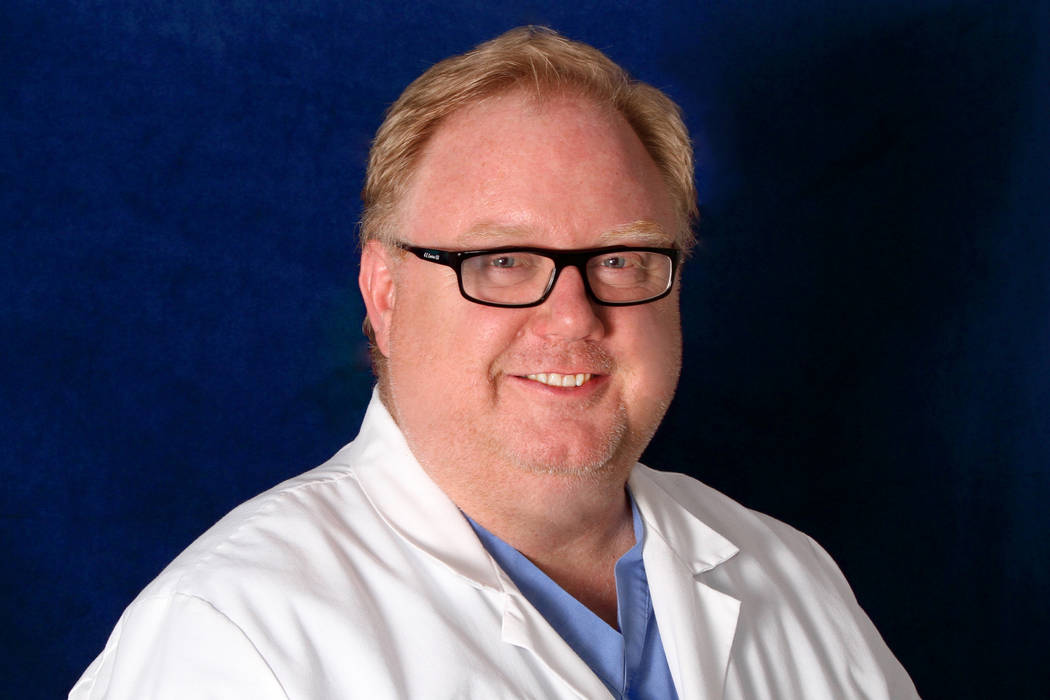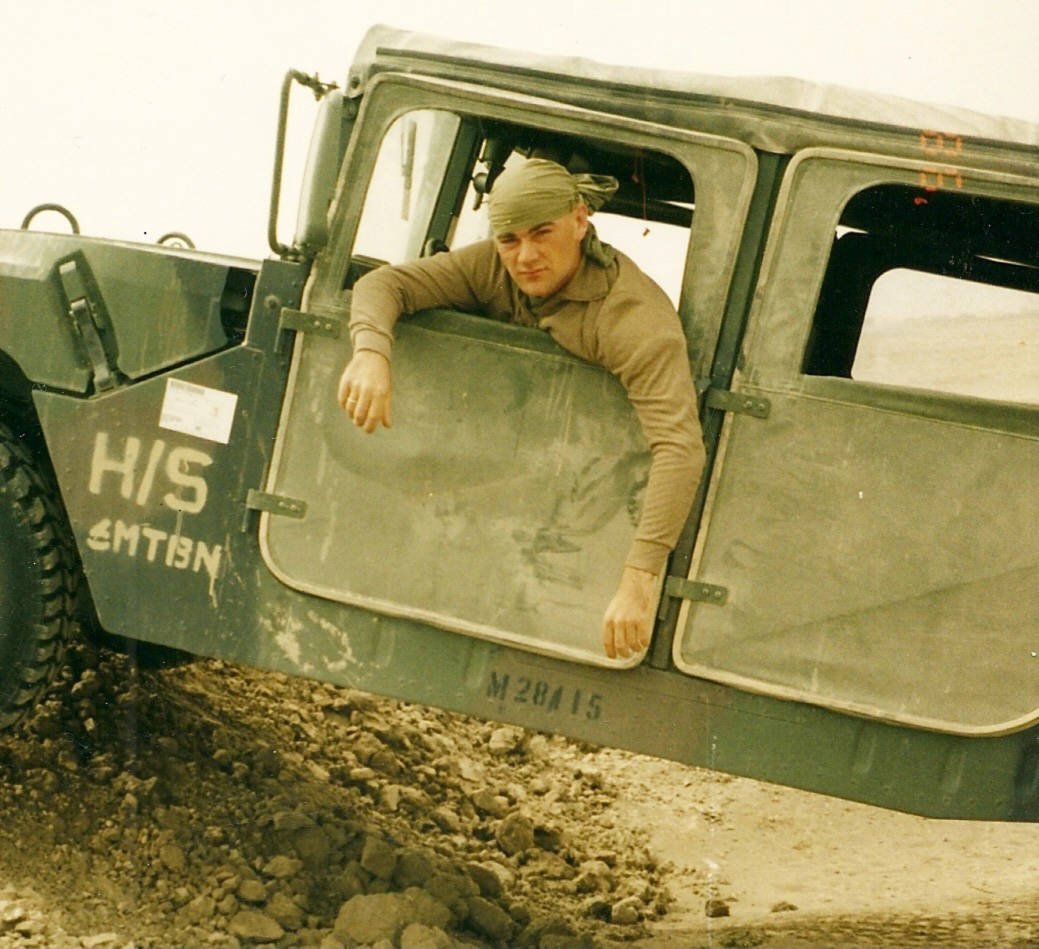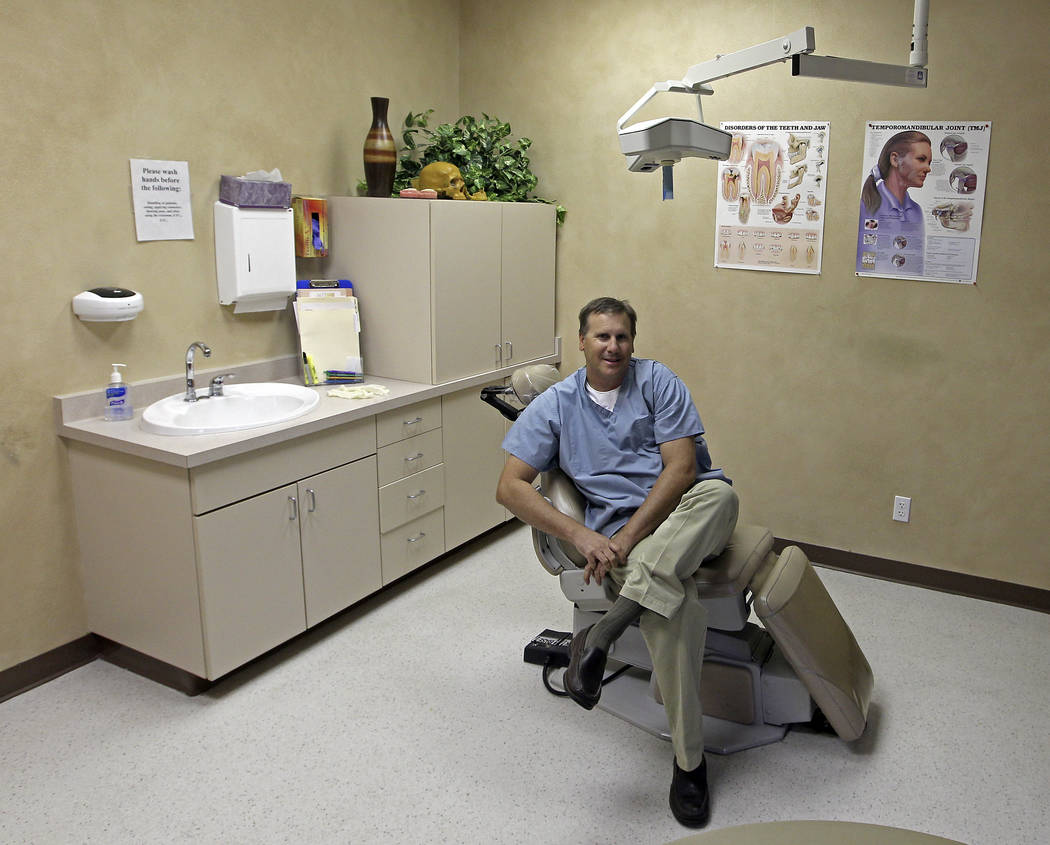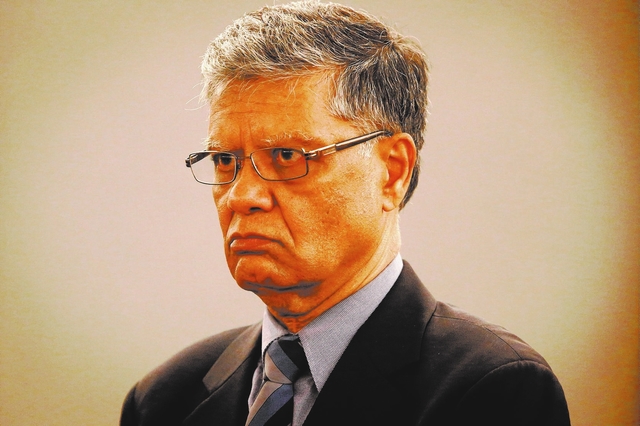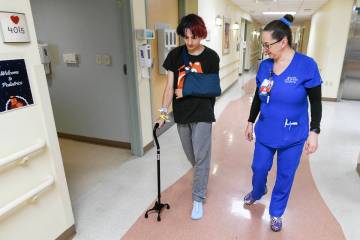Health writer Paul Harasim leaves RJ, reflects on good people
Sharing stories about the people who need medical care to enjoy life, to live out their dreams, to be with those they love. Sharing stories about the men and women who deliver the care that can make the difference in the quality of your life, who sometimes make the difference in whether you live or die.
I’ve had the good fortune to do that and more in my role as a health care storyteller for more than a decade at the Review-Journal. I will miss it.
Could I ever forget how decorated Iraq veteran Andrew Linn showed up in 2011 at University Medical Center with a metal fence pole driven through his mouth and out the back of his head after an auto accident?
I can’t forget how trauma surgeon Jay Coates and a team of doctors spent hours devising a way to remove it safely and finding a path to recovery so complete that his injury can longer be detected.
Professional excellence
There’s so much I don’t want to forget.
I’ll always remember that UMC’s 77-year-old chief of staff and head of emergency, Dr. Dale Carrison, became a physician at age 51. He’d been a manager of a car parts store, sheriff’s deputy and FBI agent before becoming one of the nation’s most honored emergency physicians.
And then there’s Dr. Nicholas Vogelzang, the former head of the University of Chicago and Nevada Cancer Institutes who’s now a lead researcher/clinician for Comprehensive Cancer Centers of Nevada. This world-renowned oncologist gives his cellphone number out to patients.
And on it goes. There’s highly respected Dr. Quynh Nguyen Feikes, the only female cardiovascular surgeon in Nevada, and Nancy Estocado, the Sunrise Hospital wound specialist who holds a patent on a wound-measuring device that helps doctors quickly determine what kind of lesion a patient has. UMC CEO Mason VanHouweling did the seemingly impossible — he got the taxpayer supported hospital to operate in the black.
Time and again — because in the medical arena the fragility of life is frequently exposed — what became evident to me from both patients and medical professionals is that people seem to have an innate need, to be a contributor, a builder, a genuine worker on behalf of humanity.
When 31-year-old Brandon Moran, ill with kidney disease, needed a transplant in 2015, friend Jacob McCulloch donated one.
No big thing, he said. That’s what friends are for.
That kind of selfless action is the part of being human that I’ve long thought needs more attention. The reality of the world isn’t just dark and horrifying.
Building ‘human fellowship’
This phenomenon of mobilizing the resources of the heart to build human fellowship was on display Oct. 1 in the UMC Trauma Center after a gunman turned an area outside Mandalay Bay into a killing field. Fifty-eight people died. Hundreds were wounded.
Though the wounded, smelling of blood and gunpowder, kept arriving at UMC with shattered limbs and tourniquets pinching severed blood vessels, those who could talk pleaded with nurses and doctors to help others first, assuring caregivers that they could wait.
“The only time I’ve ever seen that happen before is in the case of a husband and wife or parents with children after a car accident,” Joseph Bruno, the nurse in charge of UMC’s trauma unit that night, told me. “But these were people with horrific injuries telling us they could wait in line for treatment so complete strangers could have surgery first.”
Yes, the more I covered health care, the more convinced I became that most of the antagonism groups of people have for one another is learned behavior, that humans have a natural willingness to help each other.
I remain an admirer of Frans de Waal’s 2009 book, “The Age of Empathy,” which argues that humans are “preprogrammed to reach out. Empathy is an automated response over which we have limited control.”
Only those who are psychopaths, he notes, are emotionally immune to another’s situation.
People would be far better off, Waal suggests, if they placed their trust in their biological nature instead of political institutions that so often pit people against one another.
“I’d argue that biology constitutes our greatest hope,” he writes. “One can only shudder at the thought that the humaneness of our societies would depend on the whims of politics, culture or religion.”
I’ll never forget how Rosemary Rathbun and Lorrine Rodgers, grandmothers on death’s doorstep four years ago before they took part in the first in-human trial of a new antibody drug, asked me to share their stories so others could avail themselves of clinical trials through Comprehensive Cancer Centers of Nevada. They wanted other people to have hope.
Still free of cancer today — Rathbun had stage 4 throat cancer and Rodgers stage 3 breast cancer — the pair made it possible for hundreds of others to receive the latest treatments.
Good memories — I have them. It’s a testament to the talent and drive of the Las Vegas medical community that the number of dead from the Oct. 1 shooter’s hand did not rise even though the number of critical patients who suffered the kind of bullet wounds usually found on the battlefield was well into the double digits.
I won’t forget the three-hour operation by neurosurgeon Dr. Keith Blum at Sunrise Hospital that saved the life of Tina Frost. Though she lost an eye in the shooting, she’s now doing well at Johns Hopkins Hospital in her native Maryland.
Nor will I forget how Spring Valley Hospital emergency room director Carolyn Hafen broke down in tears when a 5-year-old boy bought a gift of potato chips and Gatorade with his allowance to give to wounded patients.
This week, as I take on a new opportunity as the UNLV School of Medicine’s first editorial associate director, I begin to make some new memories.
Make no mistake: I’ll work hard to make sure no one ever forgets the positive contribution the school brings to the community.
Desai: A dark chapter
A disgrace not only to the medical profession, but to the human race — that was Dipak Desai.
It was at a Feb. 8, 2008, news conference that Southern Nevadans first began to learn that a medical doctor could be pure evil — government officials announced that tens of thousands of patients at his clinics would have to be tested for hepatitis C and HIV.
I was part of an investigative team that reported how the gastroenterologist deliberately set up an assembly-line colonoscopy system devoid of infection controls to save money — one where the reuse of syringes and single dose vials of medicine ultimately killed two people, terribly sickened more than 100 others and generated fear in thousands.
Desai died of a stroke in April in a Reno hospital — he was transferred there from state prison where he was serving a life sentence for a 2013 murder conviction and 27 other charges related to his practice.
Three months after his death, Desai’s second-degree murder conviction was overturned by the Nevada Supreme Court. Rodolfo Meana, who died as a result of the hepatitis C he caught at Desai’s clinic, had failed to pursue treatment, the justices ruled. They also noted that because it was Desai’s nurse who injected Meana, and not Desai himself, he could not be convicted of murder.
The court upheld additional criminal counts against Desai, including reckless disregard, criminal neglect, theft and obtaining money under false pretenses.
Meana, who died in 2012, told me before his death that he immigrated to the United States to be safe. A retired lieutenant colonel, he had been severely wounded fighting Islamic terrorists in the Philippines.
Then in his mid-70s, he also told me that he didn’t pursue medical treatment for hepatitis C because he didn’t think he was strong enough to handle it. At the time, treatment for that disease was considered as difficult as chemotherapy. He wanted to enjoy his last years the best he could, he said.
Repeatedly, he asked me a question that should never have to be asked.
“What kind of doctors and nurses would take chances with other people’s lives?”









